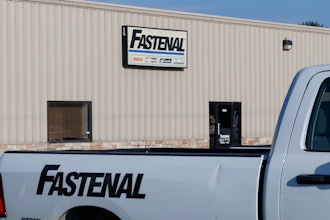
For distributors looking to grow, selling on features doesn’t work. The market is already saturated with product sellers all saying the same thing. To stand out, focus on the value you provide to the customer.
Competition for your customers is stronger than ever, but only a small percentage of competing sales reps are value-focused — leaving a significant value gap. This value gap is your differentiator.
Value-based selling goes beyond generic features and benefits to focus on a total solution. It aims to clearly show potential customers why working with you, instead of the competition, is the right decision for their business.
This is because buyers are looking for more when considering a supply partner. Advances in technology like AI and user-focused search engines have simplified the product and service research process, and chances are they have already combed the web, exploring product options long before they are ready to make a purchase.
When they are finally in front of you, they are looking for more than spec sheets and product features they can find elsewhere. They’re looking for a consultative partner who understands their needs and challenges and can provide solutions to their biggest problems.
They don’t want to be sold a product; they want to be sold a solution specific to their needs.
Four Key Strategies for Value-Based Selling
Customer segments like manufacturers already rely on complex supply networks. Distributors can set themselves apart by communicating their ability to be agile, easy to do business with and solution-oriented. Here’s how:
Identify Customer Pain Points
Imagine you have a prospect looking for tool storage solutions to create a safer, more organized and efficient workspace for their employees. Rather than kickstart the conversation discussing dimensions and material grade of your most popular options, what would happen if you guided the conversation to uncover their needs, challenges and goals?
Train your sales team on the benefits of consultative selling. Emphasize the importance of deeply understanding their customers’ businesses before offering solutions.
Besides researching their business to understand common pain points, your sales team could ask probing questions that uncover needs your customer may be overlooking:
- Can a misplaced tool or replacement part affect machine or production downtime?
- How much time do employees spend looking for misplaced tools?
- Does ineffective organization on your production floor impact safety throughout walking/working surfaces?
- How do space constraints impact workspace organization?
- How often are tools lost or damaged?
- Do you prefer a centralized modular storage option or a mobile tool cart for each workstation?
- Would foam cut-outs in tool drawers help with accountability issues from missing tools?
Through this discovery phase, you can recommend a solution that precisely fits the buyer’s business needs — increasing productivity and efficiency, creating a safer workplace through improved organization and reducing expenses from lost or damaged tools.
Provide Expert Advice and Service Levels
Trusted partnerships go beyond the transaction. When courting a new lead or nurturing an existing customer, explain how you can support them before, during and after the sale. This may include providing advice on a better solution or partnering with tool vendors that support warranty extensions, tool and instrument calibration services, tool set customization and tool repair.
Don’t assume your customers know what your offerings include. Even though you may have done business with this customer for years, it is always good to remind them how versatile you are. Manufacturer requirements are constantly changing, growing increasingly complex and may require additional support. That means they’re always looking for new ways to optimize time, improve performance and cut costs.
You can be that trusted support.
Align your sales process to meet those evolving needs and create resources – case studies, newsletters and articles – highlighting your unique value proposition.
Bundle and Package Products
Consolidating purchase orders to just a few trusted and reliable vendors is every buyer’s dream. By reducing the number of suppliers, manufacturer customers can negotiate better pricing and delivery terms and better manage transactions. Even more important is that manufacturer buyers can develop stronger relationships with their distributor partners, making them less penetrable to the competition.
Say the buyer above was interested in purchasing tool storage solutions and, through discovery, you uncovered issues they were having with their current tool line. Maybe there were issues with the timely delivery of tool orders, the frequent need for repairs or they simply wanted an all-in-one procurement option. In addition to the tool storage units, you could make tool set recommendations, even suggesting semi-customized foam inserts on those tools for enhanced visual organization.
Bundling products reduces the time required for buyer decision-making. Offering two related products or services together under one stock-keeping unit can open buyers up to new product lines, reduce administrative and shipping costs, and improve customer satisfaction overall.
Customize Your Approach
While your distribution business relies on a certain level of standardization to remain profitable, being adaptable is just as important. Distributors can customize value selling to their customers by deeply understanding their business goals and challenges, and then tailoring solutions that address those pain points.
Instead of relying on guesswork, conduct customer-centric research, including surveys and interviews, and gather data on their buying patterns to offer customized configurations.
Regularly communicate with customers to stay aware of their evolving needs and assign sales personnel to nourish those accounts. While it doesn’t hurt to have a robust e-commerce presence, don’t forget about the value of in-person interactions. Onsite sales calls and facility site visits for tool repair remain paramount for building trust that goes the distance. Be sure to partner with manufacturer suppliers supporting those kinds of value-added services. Interact with more than the buyer (i.e., foreman, maintenance workers and even line people when possible) to dig for other sales opportunities.
Measure and communicate these successful partnerships throughout your organization. By tracking the impact of your value-based approach, you’ll have an easier time selling it to your sales team and leadership.
Sales professionals who effectively communicate their value can strengthen their relationships, insulate against the competition, and provide superior support and service when their customers need it the most.
Jeff Smith is the director of sales and marketing at Beta Tools US.























